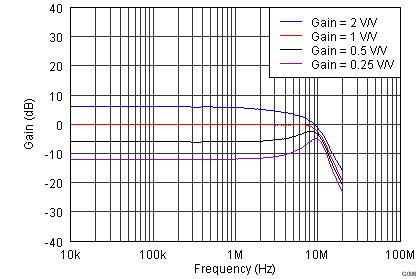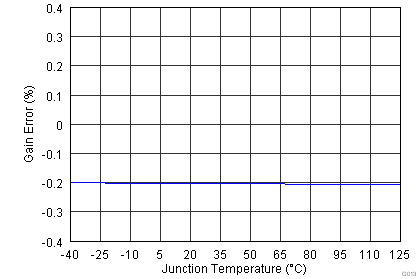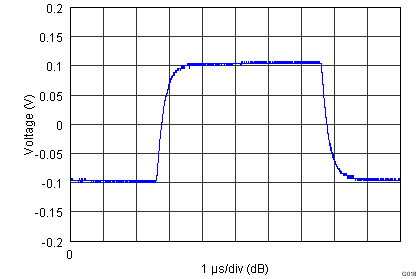SBOS531E August 2010 – June 2019 AFE031
PRODUCTION DATA.
- 1 Features
- 2 Applications
- 3 Description
- 4 Revision History
- 5 Description, continued
- 6 Device Comparison Table
- 7 Pin Configuration and Functions
-
8 Specifications
- 8.1 Absolute Maximum Ratings
- 8.2 ESD Ratings
- 8.3 Thermal Information
- 8.4 Electrical Characteristics: Transmitter (Tx)
- 8.5 Electrical Characteristics: Power Amplifier (PA)
- 8.6 Electrical Characteristics: Receiver (Rx)
- 8.7 Electrical Characteristics: Digital
- 8.8 Electrical Characteristics: Two-Wire Interface
- 8.9 Electrical Characteristics: Internal Bias Generator
- 8.10 Electrical Characteristics: Power Supply
- 8.11 Timing Requirements
- 8.12 Timing Diagrams
- 8.13 Typical Characteristics
- 9 Detailed Description
- 10Application and Implementation
- 11Device and Documentation Support
- 12Mechanical, Packaging, and Orderable Information
Package Options
Mechanical Data (Package|Pins)
- RGZ|48
Thermal pad, mechanical data (Package|Pins)
Orderable Information
8.13 Typical Characteristics
At TJ = 25°C, PA_VS = 16 V, VAVDD = VDVDD = 3.3 V, and 10 kΩ connected to PA_ISET (pin 46), unless otherwise noted. Figure 5. Tx Filter Gain vs Frequency
Figure 5. Tx Filter Gain vs Frequency  Figure 7. PA Gain vs Frequency
Figure 7. PA Gain vs Frequency  Figure 9. Tx PGA Gain vs Frequency
Figure 9. Tx PGA Gain vs Frequency  Figure 11. Rx PGA2 Gain vs Frequency
Figure 11. Rx PGA2 Gain vs Frequency  Figure 13. Filter Cutoff vs Temperature
Figure 13. Filter Cutoff vs Temperature  Figure 15. PA Gain Error vs Temperature
Figure 15. PA Gain Error vs Temperature  Figure 17. Rx PGA2 Gain Error vs Temperature
Figure 17. Rx PGA2 Gain Error vs Temperature  Figure 19. Supply Current (Shutdown) vs Temperature
Figure 19. Supply Current (Shutdown) vs Temperature  Figure 21. Tx Filter Pulse Response
Figure 21. Tx Filter Pulse Response  Figure 23. Rx Pulse Response
Figure 23. Rx Pulse Response  Figure 6. Rx Filter Gain vs Frequency
Figure 6. Rx Filter Gain vs Frequency  Figure 8. Maximum PA Output Voltage vs Frequency
Figure 8. Maximum PA Output Voltage vs Frequency  Figure 10. Rx PGA1 Gain vs Frequency
Figure 10. Rx PGA1 Gain vs Frequency  Figure 12. Two-Wire Receiver Gain vs Frequency
Figure 12. Two-Wire Receiver Gain vs Frequency  Figure 14. Tx PGA Gain Error vs Temperature
Figure 14. Tx PGA Gain Error vs Temperature  Figure 16. Rx PGA1 Gain Error vs Temperature
Figure 16. Rx PGA1 Gain Error vs Temperature  Figure 18. Quiescent Supply Current vs Temperature
Figure 18. Quiescent Supply Current vs Temperature  Figure 22. PA Pulse Response
Figure 22. PA Pulse Response 